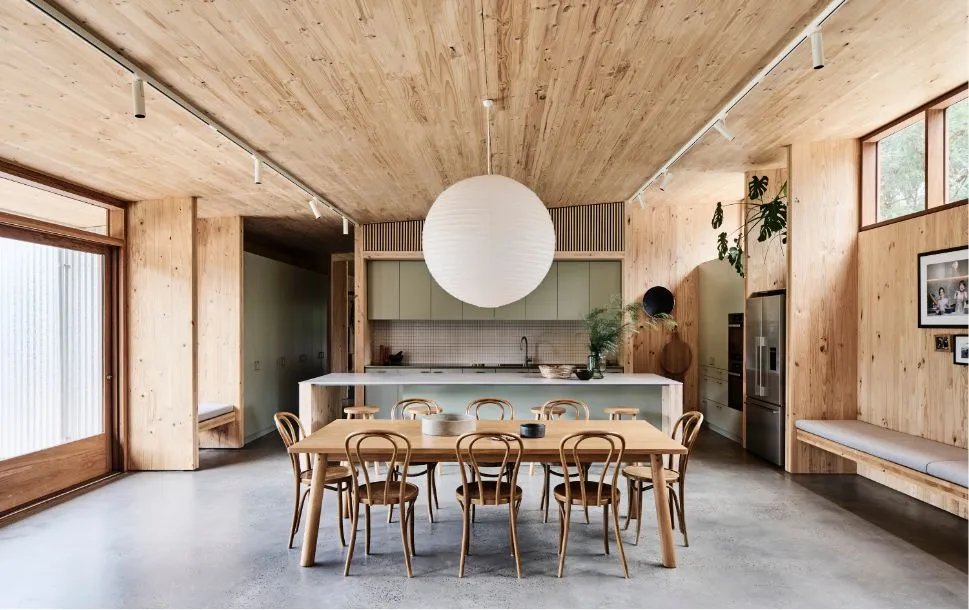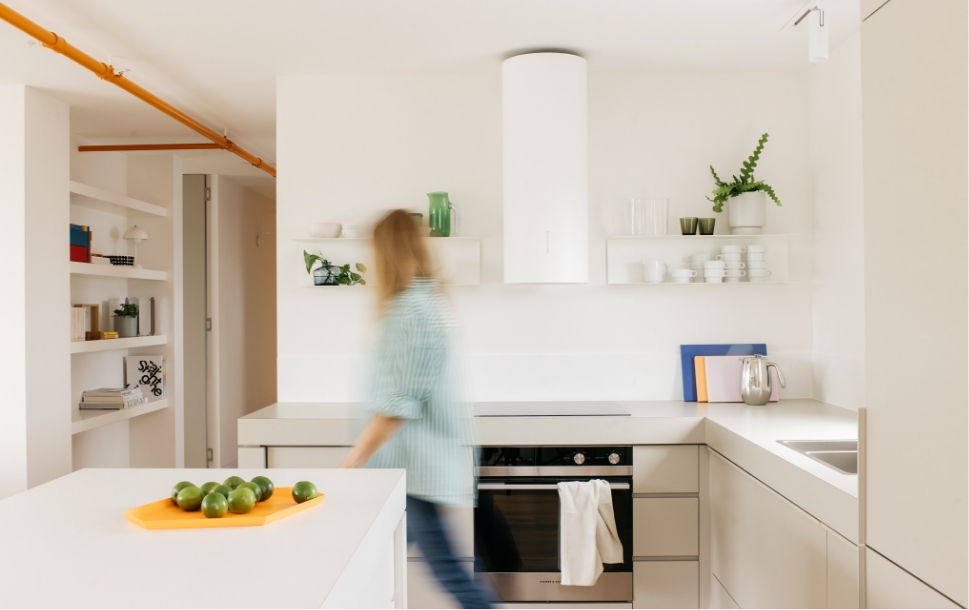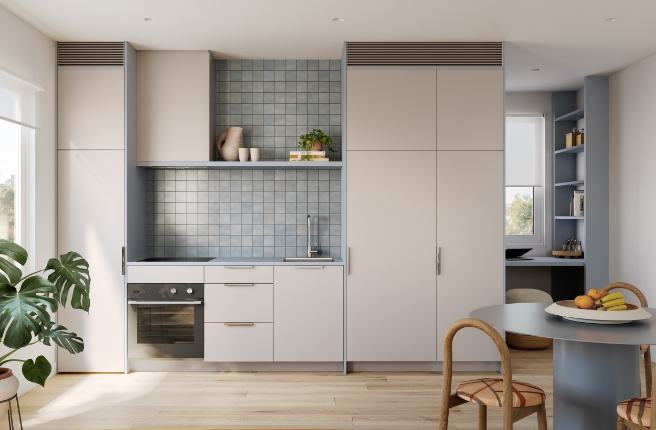Leaning into its environment, Sweetwater House provides a contextual response to the surrounding landscape and local design language. Located in an area known for architectural experimentation, housing prototypes and a general design curiosity, Sweetwater House represents all these values and is executed with a material authenticity that brings delight to its inhabitants.
Chris Botterill, Principal at Jackson Clements Burrows Architects (JCB) talks about Sweetwater House with comfort and ease. He explains how the family home allows for multi-generational living and interstate guests; making it possible for everyone to come together in a large group or find space for a moment of solitude.
Positioned alongside the regionally significant Narringalling (Sweetwater Creek) in Frankston South, surrounded by Indigenous flora and fauna, the move has changed the lives of a family who have spent the last 20 years living in Melbourne’s inner north. “It’s been quite the journey,” explains Botterill on his decision to buy, build and move his family during the peak of Covid.
Like the Robin Boyd home nearby and Roy Grounds’ design just down the way, Sweetwater House continues the legacy set by these prototype homes built in the mid-century.
“That idea of being inventive, being curious, and creative underpins the philosophy of the project - making that connection, not just visually back to these homes, but also to that concept of doing things well and challenging the status quo,” says Botterill.
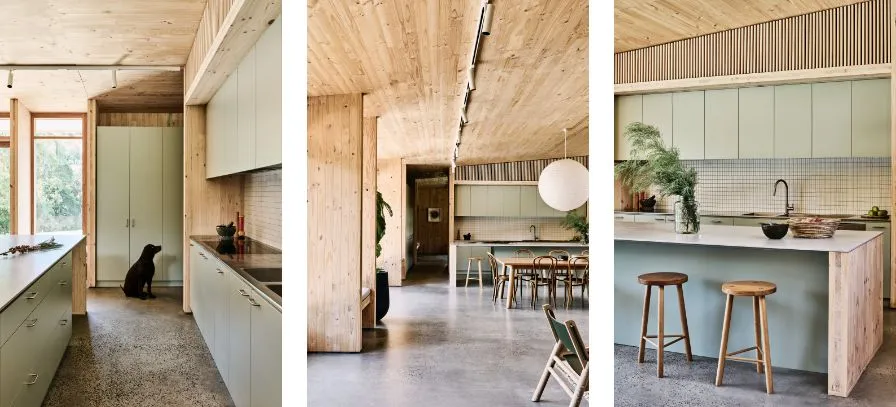

The home’s paired-back palette and material scheme references local mid-century design, but there’s more to it than meets the eye. Take for example the joinery, where four Laminex greens* have been selected to mimic and respond to the colours of the surrounding landscape. Walking through the home, as the day passes and the light changes, the subtle differences have a beguiling impact.
“It’s only when you start moving through the house that you start to notice the difference. I really like that. It’s not like every panel in the kitchen is different, it’s a more subtle touch. As you move through different rooms, the different shades of green laminate are quietly revealed.”
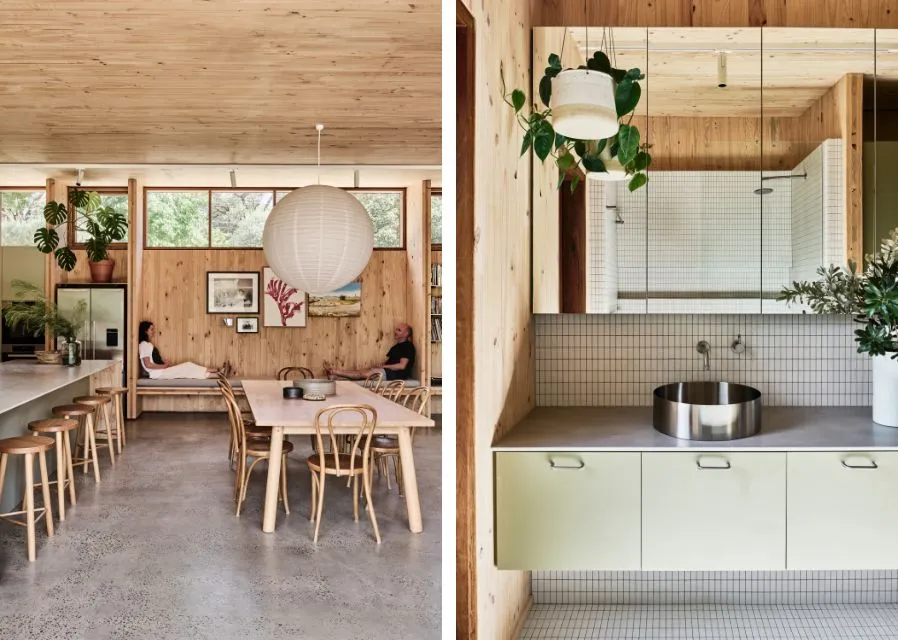

The home’s exposed mass timber interior has an enduring and tactile quality, illuminated throughout by low voltage LED track lights and embedded linear lights. Concrete is the predominant flooring material. Natural quirks and hidden details have been revealed during the finishing process, where boot prints or scuff marks are now entertaining stories to share. In the bedrooms, lowered ceilings, plush wool carpets, and flowing linen curtains create a sense of compression and embrace.
With all the timber elements, Botterill was careful to make room for finesse and fineness. The kitchen island features a 12mm-thick porcelain benchtop, to match the rear folded stainless-steel benchtop. The D-pulls of the joinery hark back to the modernist homes mentioned earlier, albeit with a contemporary knurled finish that promotes a tactile experience.
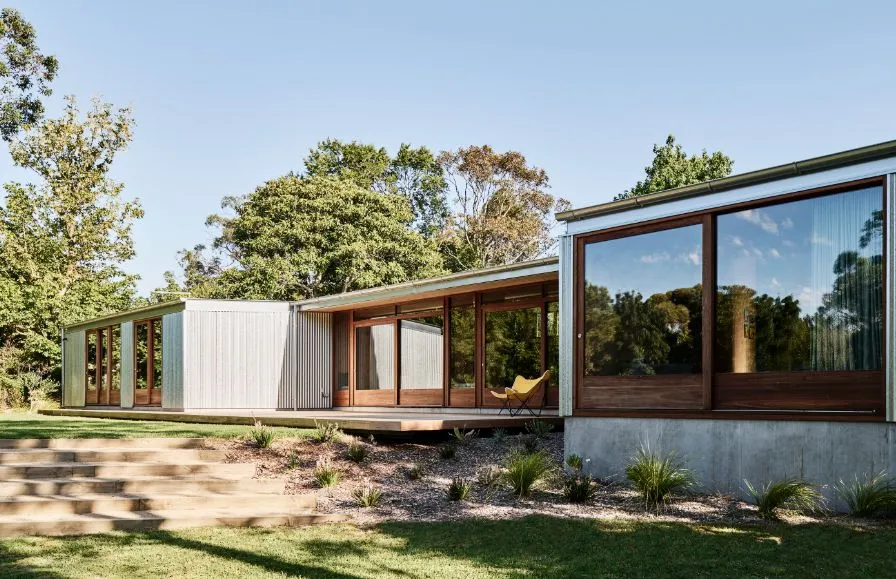
Sweetwater House provides flexibility and respite for a maturing family, all while exploring sustainable design and construction practices that demonstrate a respect for the local streetscape and natural environment. With its warm timber palette and enduring materiality, this is a home, like its mid-century neighbours, that will stand the test of time.
Learn more about the project and explore JCB Architect’s portfolio on their website.
*Laminex products used within Sweetwater House are Laminex Green Slate, Laminex Olivine, Laminex Bayleaf and Laminex Possum.
Credits:
Design / Project: Christopher Botterill
Architecture: Jackson Clements Burrows Architects
Photography: Tom Blachford
Joinery: Colloyd


